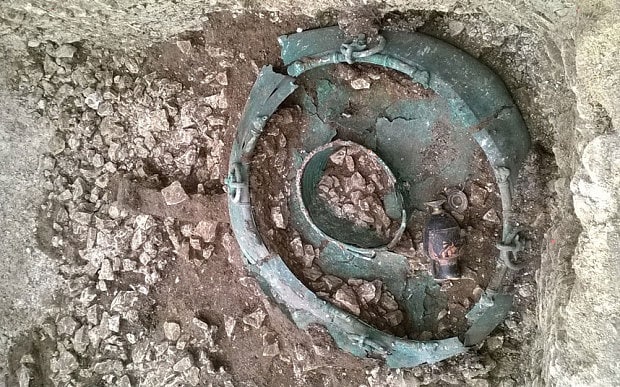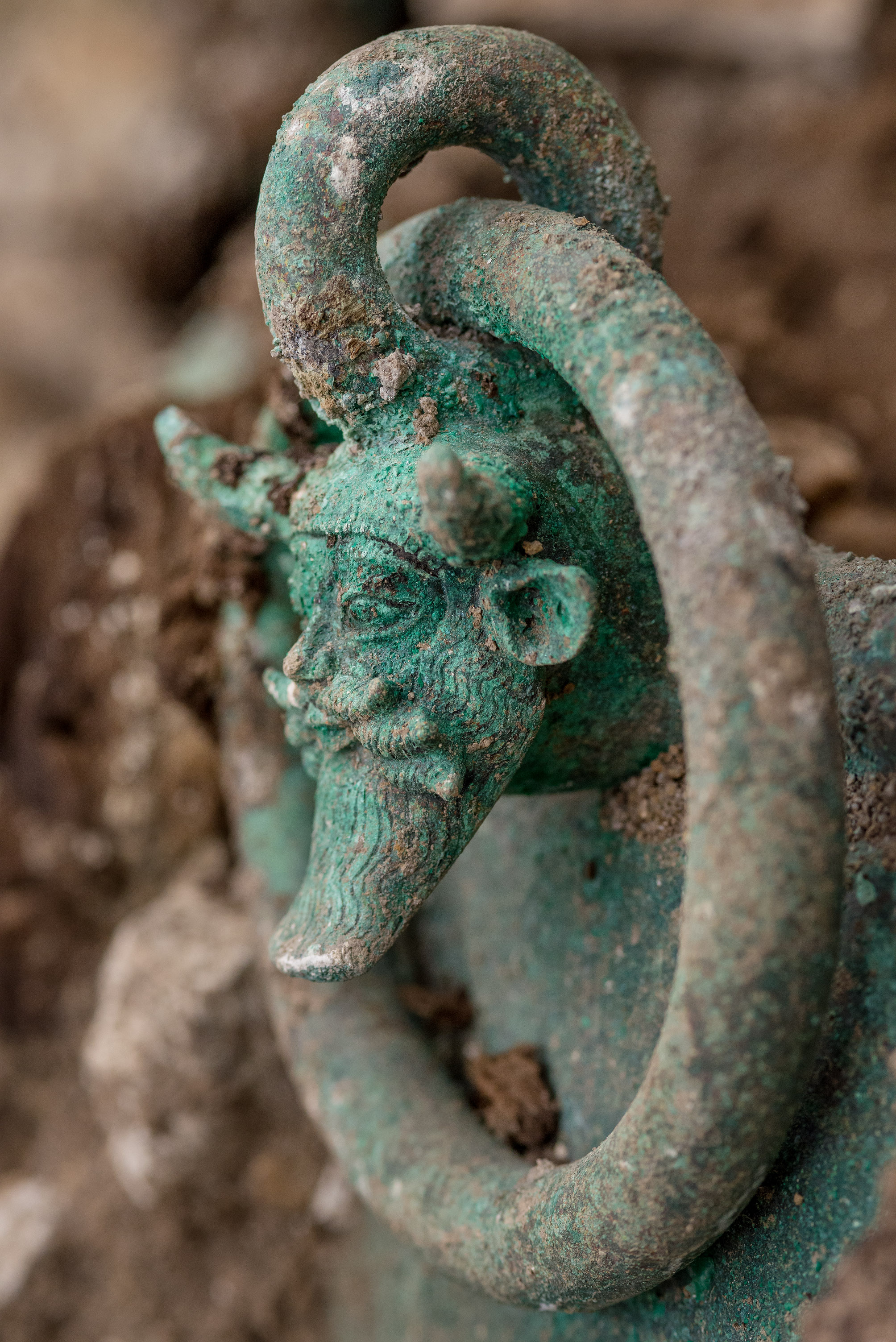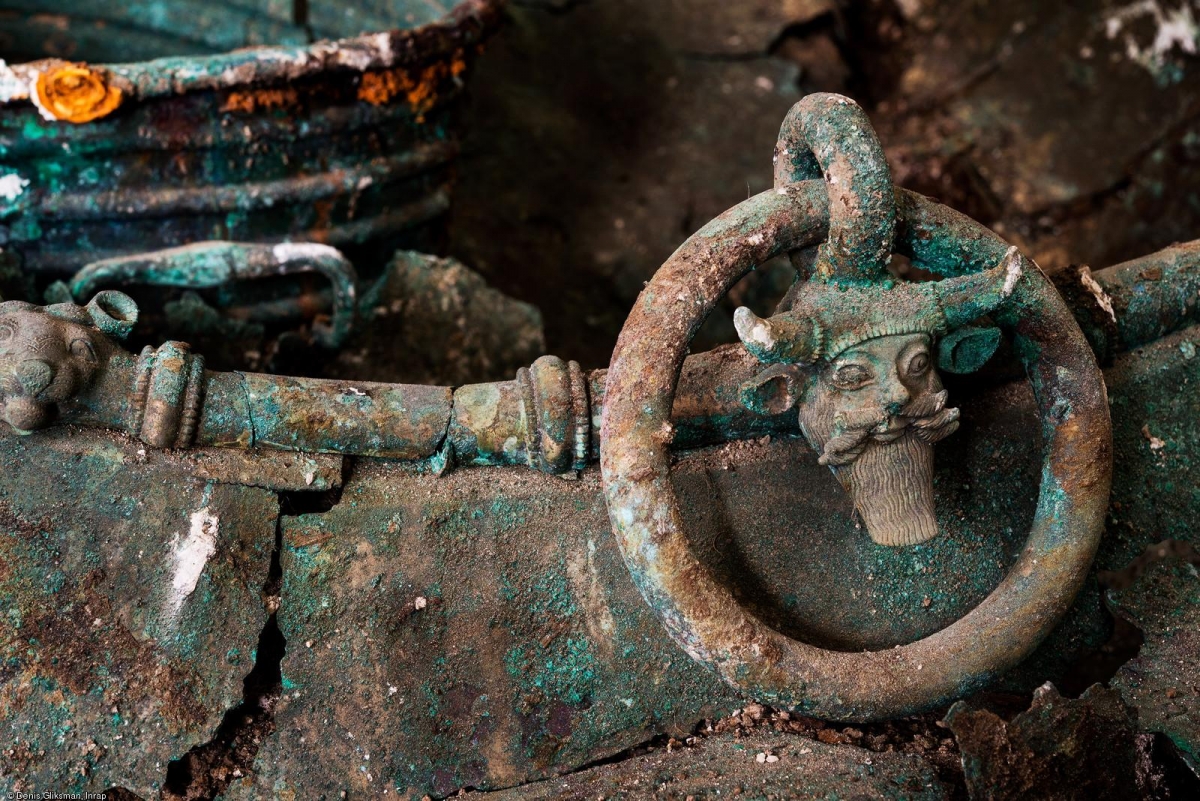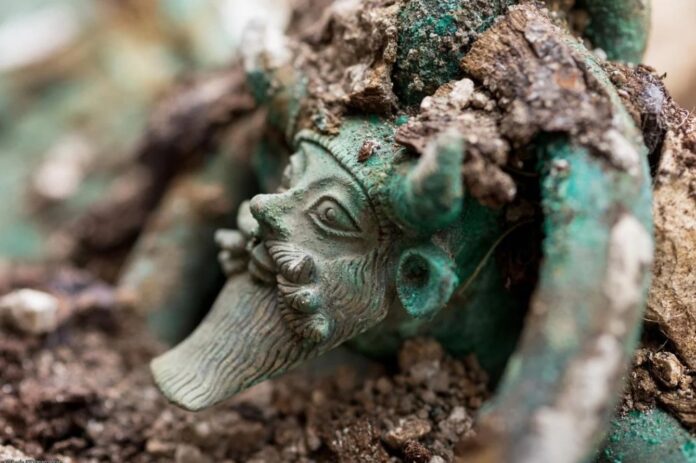The archaeological discoveries made in France have unveiled a remarkable glimpse into the rich cultural exchanges that took place between the ancient Celts and their Mediterranean counterparts. Among the most captivating finds is a massive funerary chamber believed to belong to a 5th-century BC Celtic Prince, containing a stunning cauldron adorned with the imagery of the Greek river god Achelous.
The Tomb of the Celtic Prince

The tomb, estimated to be around 2,500 years old, sheds light on the extensive trade network that connected the Celts to the civilizations of ancient Greece and Etruria. This impressive burial site showcases the wealth and sophistication of the Celtic culture, challenging the common perception of them as a purely barbarian society.
The Cauldron of Achelous
One of the most remarkable artifacts discovered within the tomb is a large cauldron, intricately decorated with images of the Greek river god Achelous. According to ancient Greek religion and mythology, Achelous was the deity associated with the Achelous River, the largest river in Greece. He was the son of the Titans Oceanus and Tethys, and was said to be the father of the Sirens, as well as various other nymphs and offspring.

The cauldron’s decorations suggest a deep cultural exchange between the Celts and the Greeks, with the inclusion of Achelous’ imagery demonstrating the integration of Hellenic influences into the Celtic funerary rites and material culture. Additionally, the cauldron’s interior features an image of Dionysus, the god of wine, gazing upon a woman, further underscoring the cultural interconnectedness of these ancient civilizations.
The Wealth and Trade of the Celtic Prince
The wealth and trade connections of the Celtic Prince are evident in the other artifacts found within the tomb, including pottery and gold-decorated drinkware. These items indicate that the Celts were part of the extensive Mediterranean trade network, exchanging goods and cultural influences with their neighbors across the sea.

The discovery of this extraordinary Celtic tomb and its remarkable artifacts, particularly the cauldron adorned with the imagery of the Greek god Achelous, provides a fascinating glimpse into the cultural complexity and interconnectedness of the ancient world. It challenges the traditional narratives and demonstrates the sophisticated nature of Celtic society, its engagement with the broader Mediterranean world, and the rich tapestry of cultural exchange that defined this pivotal period in history.
